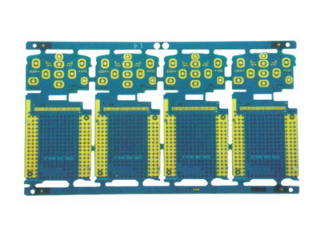1. Printed circuit board lamination
Laminating parameters may be different due to different companies' plates. Take the above-mentioned Shengyi substrate and PP as a multi-layer board. In order to ensure the full flow of the resin and make the bonding force good, it requires a lower heating rate (1.0-1.5°C/min) and multi-stage Pressure fitting requires a longer time in the high temperature stage, and maintains at 180°C for more than 50 minutes. The following is a recommended set of platen program settings and the actual temperature rise of the plate. The bonding force between the copper foil and the substrate of the extruded board was 1.ON/mm, and the board after drawing electricity did not show delamination or air bubbles after six thermal shocks.
Halogen-free printed circuit boards
2. Drilling processability
The drilling condition is an important parameter, which directly affects the quality of the hole wall of the PCB during processing. The halogen-free copper clad laminate uses P and N series functional groups to increase the molecular weight and the rigidity of the molecular bond, thereby also enhancing the rigidity of the material. At the same time, the Tg point of halogen-free materials is generally higher than that of ordinary copper clad laminates, so ordinary Drilling with the drilling parameters of FR-4, the effect is generally not very satisfactory. When drilling halogen-free boards, some adjustments should be made under normal drilling conditions.
For example, if the company uses Shengyi S1155/S0455 core board and a four-layer board made of PP, the drilling parameters are not the same as the normal drilling parameters. When drilling halogen-free plates, the speed should be increased by 5-10% faster than the normal parameters, while the feed and retreat speeds should be reduced by 10-15% compared with the normal parameters. In this way, the roughness of the drilled hole is small.

3. Alkali resistance
Generally, the alkali resistance of halogen-free plates is worse than that of ordinary FR-4. Therefore, in the etching process and the rework process after the solder mask, special attention should be paid to the immersion time in the alkaline stripping solution. To prevent white spots on the substrate. Our company has suffered a disadvantage in actual production: the halogen-free board that has been cured after solder mask needs to be rewashed due to some problems. However, the normal FR-4 rewashing method is still used during the rewashing, and the temperature is After soaking in 10% NaoH at 75°C for 40 minutes, all the substrates were washed out with white spots, and the soaking time was shortened to 15-20 minutes. This problem no longer exists. Therefore, it is best to do the first board first to get the best parameters for the rework solder mask of the halogen-free board, and then rework in batches.
4. Halogen-free solder mask production
At present, there are many kinds of halogen-free solder mask inks launched in the world, and their performance is not much different from that of ordinary liquid photosensitive ink. The specific operation is basically the same as that of ordinary ink.
5. Summary
Halogen-free PCB printed circuit boards have a low water absorption rate and meet the requirements of environmental protection, and other properties can also meet the quality requirements of PCB boards. Therefore, the demand for halogen-free PCB boards is increasing; other major boards Suppliers have also invested more funds in the research and development of halogen-free substrates and halogen-free PP. I believe that low-priced halogen-free board structures will be put on the market soon. Therefore, all PCB manufacturers should put the trial and use of halogen-free plates on the agenda, formulate detailed plans, and gradually expand the number of halogen-free plates in the factory, so that they will be at the forefront of market demand.